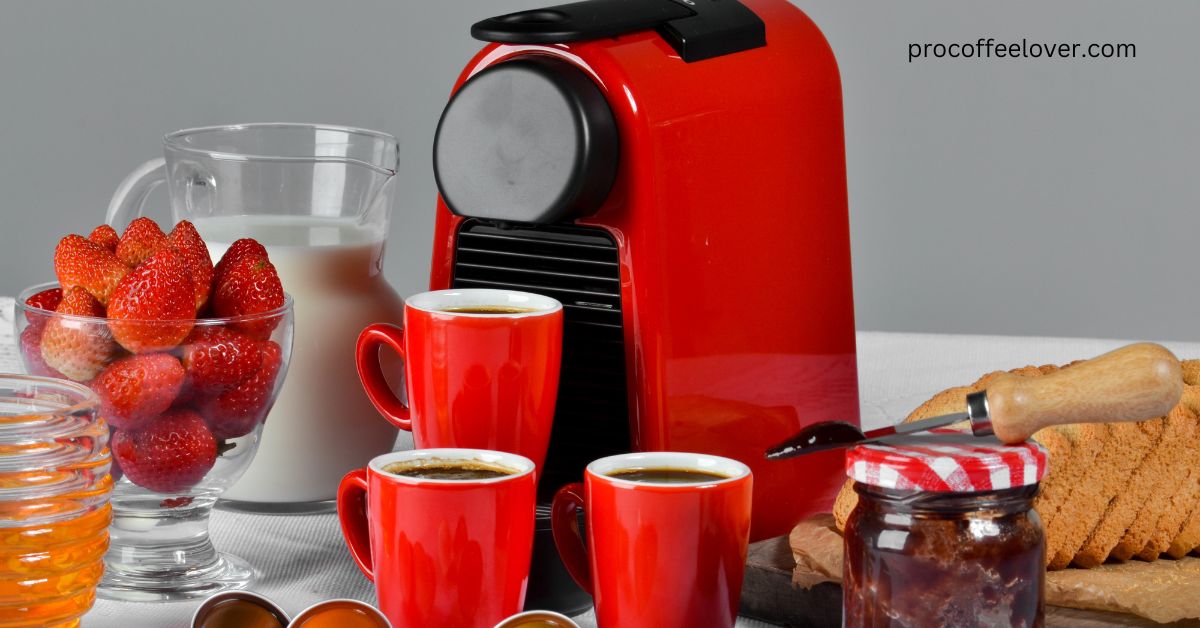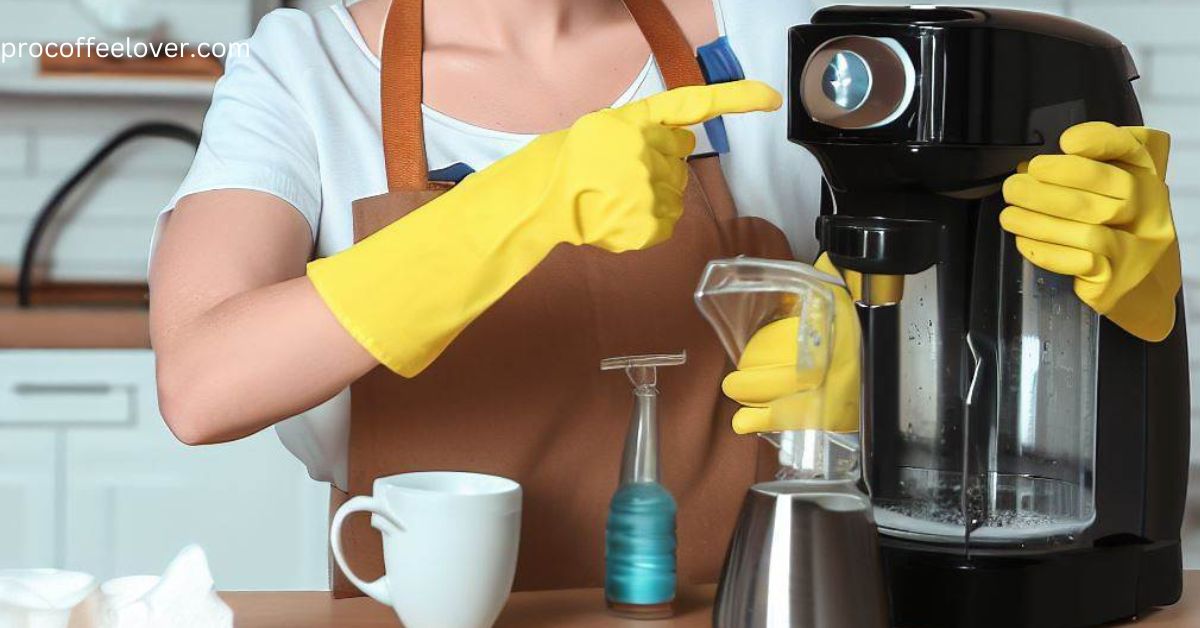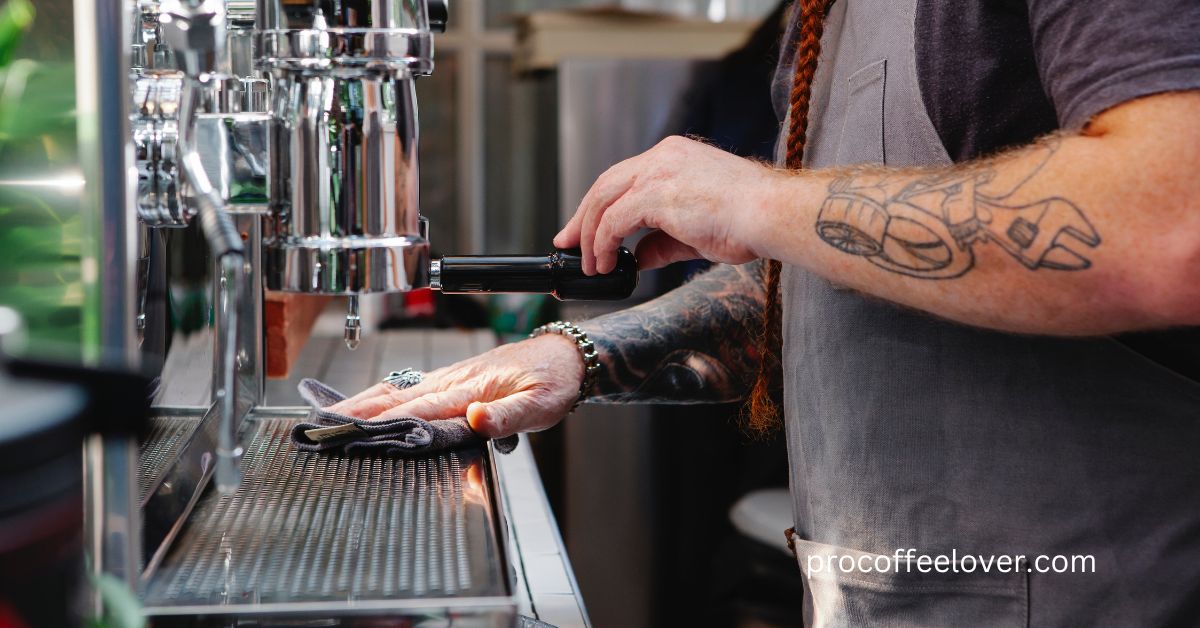Today we will discuss How To Clean A Coffee Maker Without Vinegar Or Baking Soda. We are pleased to present our guide for maintaining a coffee maker free of vinegar and baking soda. While these traditional cleaning agents work, we understand that some prefer alternatives that don’t leave behind lingering residues or odors.
This article will guide you through some practical solutions if you are sensitive to vinegar’s strong smell or want to try something else.
Importance Of Cleaning A Coffee Maker
It is essential to clean your coffee maker regularly, both for the sake of quality coffee and for its overall functionality. Over time, coffee makers accumulate minerals, oils, and residues from brewing.
This can negatively affect the taste and smell of your coffee. If you fail to clean the components, your coffee may taste bitter or sour. This will reduce the enjoyment of drinking it. Unclean coffee makers can also become breeding grounds for bacteria, mold, and germs.
This poses health risks Cleaning your coffee maker regularly will not only deliver a consistently rich and flavorful drink, but it will also protect your health and your investment in the machine. Also, see more: Can You Drink Coffee Without Gallbladder?
Standard Methods Of Cleaning A Coffee Maker

Several methods can be used to clean a coffee machine to ensure optimal performance and hygienic conditions. A mixture of water and white vinegar is one way to clean a coffee maker. This solution can be run through the brewing process to help break down mineral deposits.
Baking soda is also effective as a mild abrasive to remove stains from the carafe or other parts. The growth of bacteria and mold is prevented by regularly cleaning removable components such as the filter basket or carafe.
Wiping the exterior surfaces of the coffee maker with a dampened cloth will keep it looking immaculate. Each of these techniques helps keep the coffee maker clean and well-maintained. This guarantees each cup’s deliciousness and safety.
Limitations Of Using Vinegar Or Baking Soda
Although vinegar and baking soda can be used to clean various household items, they are unsuitable for cleaning coffee makers. The pungent smell of vinegar can persist even after a thorough cleaning, affecting the flavor and aroma of future coffee.
The acidity of vinegar can cause premature wear and tear on some coffee makers. Even though it is gentle, baking soda may not be powerful enough to remove stubborn mineral deposits from some coffee machines.
When used excessively, baking soda can also leave behind a residue that affects the coffee’s taste. Consider these limitations when cleaning your coffee maker and look for alternative methods.
What Is The Best Way To Clean A Coffee Maker Without Vinegar Or Baking Soda?
Citric acid is a natural cleaning agent that cleans coffee makers without vinegar or baking soda. Pour a tablespoonful of citric acid into warm water and pour that solution into the reservoir. Allow the solution of citric acid to dissolve mineral deposits and residue.
Run a coffee maker’s brewing cycle. Then, rinse the surface with plain water for a few cycles to remove any citric acid residue. To remove grime from external surfaces, use a solution of warm water and mild dish soap.
This alternative method will ensure a clean machine without the solid smells or residues of vinegar and baking soda. It will also maintain the device’s performance and the brewed coffee’s quality.
Alternative Methods Of Cleaning A Coffee Maker
Using Borax
A popular cleaning product is borax. For cleaning refrigerators, coffee makers, and washing machines, use this. A common substitute for white vinegar is this all-purpose cleanser. Clean your coffee maker with borax by combining a few tablespoons with warm water.
Blend well. Mix everything well. Start the solution in your coffee maker. During the time that the borax solution is flowing, keep the brew setting at medium or heavy. Clean the coffee maker, then fill it with fresh, clean water and run it through at least twice.
Using Hydrogen Peroxide
Everyone is aware of hydrogen peroxide’s great disinfecting properties. It has an excellent reputation for cleaning everything and anything. Your coffee maker can look brilliant after being cleaned with hydrogen peroxide.
Combine two cups of water with one cup of hydrogen peroxide. Four to five additional coffees should be made using this combination in the coffee maker. Keep the brewing cycle at the default setting; if it feels more convenient, run it a couple more times.
After cleaning, switch to fresh water and rinse the system to remove any leftover hydrogen peroxide. Now you can make another flavorful and fragrant cup of coffee. Also, see more Sage vs Breville
Using Dishwashing Liquid
Even the most costly china may be cleaned without risk of harm using dishwashing solutions or dish soap. Why not make your drip coffee maker the same one you use at home? Dishwashing agents exist to make your goods gleam. For every type of cookware, they are suitable.
Dishwashing liquid is an excellent cleaning agent for machines. If you feel comfortable doing it, this is an excellent method for cleaning your equipment.
Use dish soap only after disassembling your coffee maker and separating the housing from the working parts. Preparing a cleaning solution using soapy water, then washing each component separately. Wash it instead with your hands, and avoid using a scrubbing pad.
Let the parts air-dry after washing. After you have cleaned your coffee maker, it is time to brew. Run fresh water through before assembly. This ensures no soap residue is left on any part of your machine.
Cleaning The Different Parts Of A Coffee Maker
It is essential to clean the different components of your coffee maker to maintain its lifespan and ensure the quality of the coffee you brew. The carafe and filter basket should be cleaned regularly with warm, soapy water to prevent mold and bacteria growth.
The carafe spout, lid, and any removable parts should be cleaned periodically with warm soapy water to avoid mold and bacteria growth. The water reservoir should be cleaned and wiped with a mild cleaning solution to remove mineral deposits.
To keep the coffee maker neat and clean, wipe its exterior surfaces with a damp rag. These parts must be maintained regularly for a coffee maker to function correctly and consistently deliver delicious espresso cups.
How Do You Remove Stubborn Stains?
To remove stubborn stains, you need a tailored and strategic approach. You should first identify the stain, since different stains require different treatments. Pre-treat oil-based stains with dish soap or stain remover before washing.
Immediately blotting the stain and rinsing it with cold water is recommended for water-based stains. Then treat it with mild detergent. Before washing, rinse protein-based stains like blood or lactose with cold water.
If you have dye stains, you may need to use color-safe bleach. Remember to remain patient and persistent throughout the entire process. Use techniques such as blotting and scrubbing, and soak when required.
Depending on the stain, commercial stain removers and natural remedies can be very effective. Consult professionals if all else fails.
Tips For Keeping Your Coffee Maker Clean!

● When brewing coffee, use demineralized water.
● You can only use the carafe to fill the reservoir if it is cleaned with hot, soapy water each time.
● Do not leave used, wet grounds in your coffee maker.
Tip
Keurig and other K-cup machines must also be cleaned thoroughly to remove the coffee residue buildup on the needle impact and brewer. Follow the instructions provided by the manufacturer.
You can wash these machines with white vinegar and dish soap. Plan to do minor weekly cleanings, water filter cartridge cleanings every two months, and thorough descaling at least once every three months.
How To Clean A Coffee Maker Without Vinegar Or Baking Soda(FAQs)
How Do You Clean A Coffee Maker Naturally?
You can clean your coffee maker in several ways. You can clean your coffee maker with vinegar, lemons or hydrogen peroxide. Each option has its benefits and disadvantages
Which Ingredients Work Best For Cleaning A Coffee Maker?
Cleaning a coffee machine is easy with a few ingredients. Due to its acidity and ability to dissolve mineral deposits, white vinegar is often used. Baking soda can remove stains because of its mild abrasive qualities
.
Citric acid, known for its ability to break down mineral residues and deposits, is also a good option.
When used moderately, dish soap is ideal for cleaning removable components. Water is also essential for rinsing out and diluting the cleaning agents.
How Much Lemon Juice To Clean Coffee Maker?
You should use equal parts of lemon juice and water to clean your coffee maker. You can, for example, mix half a mug of lemon juice and half a mug of water. This mixture balances cleaning power and dilution to avoid damaging or altering the taste of the coffee maker.
Conclusion
Finally we learned How To Clean A Coffee Maker Without Vinegar Or Baking Soda. Baking soda or vinegar is sometimes necessary to maintain a clean coffee maker. Citric acid is a natural cleaner that can remove mineral deposits without leaving unwanted residues behind.
You can improve the performance of your coffee maker by dissolving one tablespoon of citric in warm water and then running a brewing process.
